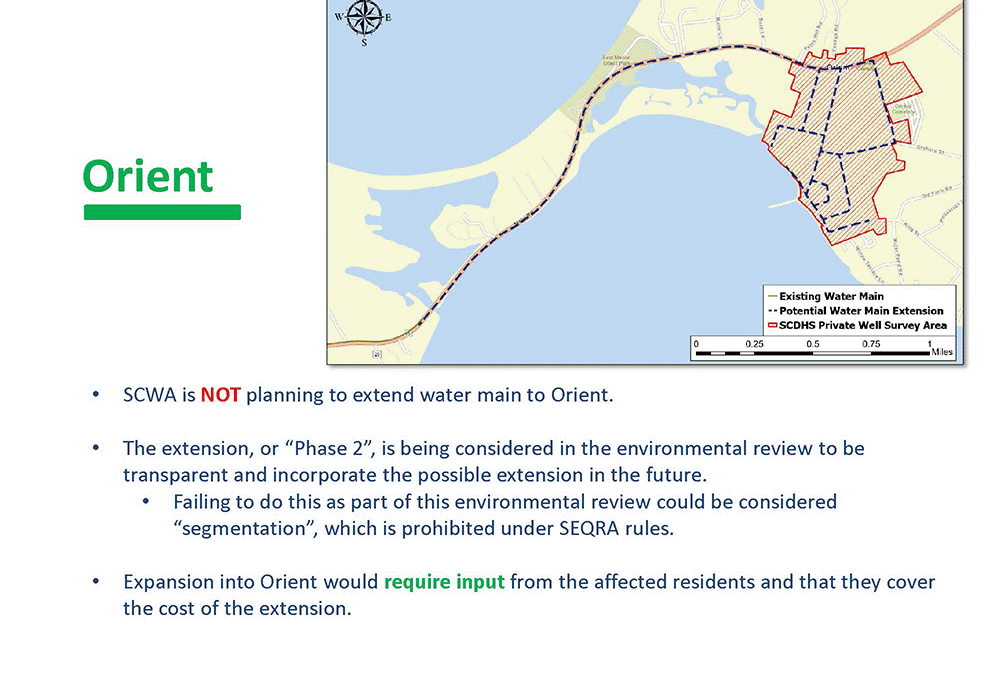In the Fall of 2022 the Suffolk County Department of Health Services (SCDHS) began a private well testing survey in Orient Village. They had detected high concentrations of “forever chemicals” a group of perfluorochemical compounds collectively known as PFAS or PFCs in several wells. The survey was expanded twice based on the results of each phase and the groundwater studies performed by SCDHS. If your property is located within the survey area shown on this map, you can still request free testing for the first time. In addition, if you had your water tested over a year ago you can request another free test. For those outside the survey area, private well testing by SCDHS costs $100 and can now include PFAS testing by request. Call (631) 852-5810 to schedule a well test.
On April 20, 2024 the EPA finalized new national drinking standards for public water systems for six types of PFAS https://www.epa.gov/sdwa/and-polyfluoroalkyl-substances-pfas . These standards need to be met by public water systems by 2029. While the NY State DEC has provided filtration systems or bottled water for households in the SCDHS survey area with concentrations of PFOS or PFOA above the state standard of 10 parts per trillion, there are no plans at this time to provide filtration for those whose water does not meet the new national standards.
On Thursday Feb. 9, 2023 the Orient Association hosted a Zoom Information Session so that the community can learn more about the expanded water testing survey for PFAS contaminants that is being performed by the Suffolk County Department of Health Services (SCDHS). Jason Hime, the Principal Public Health Engineer of the SCDHS Department of Water Resources offered a short presentation covering the following:
- What are PFAS contaminants and where do they come from?
- What are the health effects?
- What are the regulations on PFAS levels?
- The Orient Village Survey- scope of water testing and follow up.
On Monday Oct. 17, 2022 the Orient Association hosted a Zoom Information Session so that the community can learn more about PFAS contaminants and the Water Quality survey that is being performed by the Suffolk County Department of Health Services (SCDHS). Jason Hime, the Principal Public Health Engineer of the SCDHS Department of Water Resources offered a short presentation covering the following:
- What are PFAS contaminants and where do they come from?
- What are the health effects?
- What are the regulations on PFAS levels?
- The Orient Village Survey- scope of water testing and follow up.
Recent Happenings

Southold Zoning Update Project – July 29, 2025 3-4pm

Orient Water Resources Study Is Finally Here!


